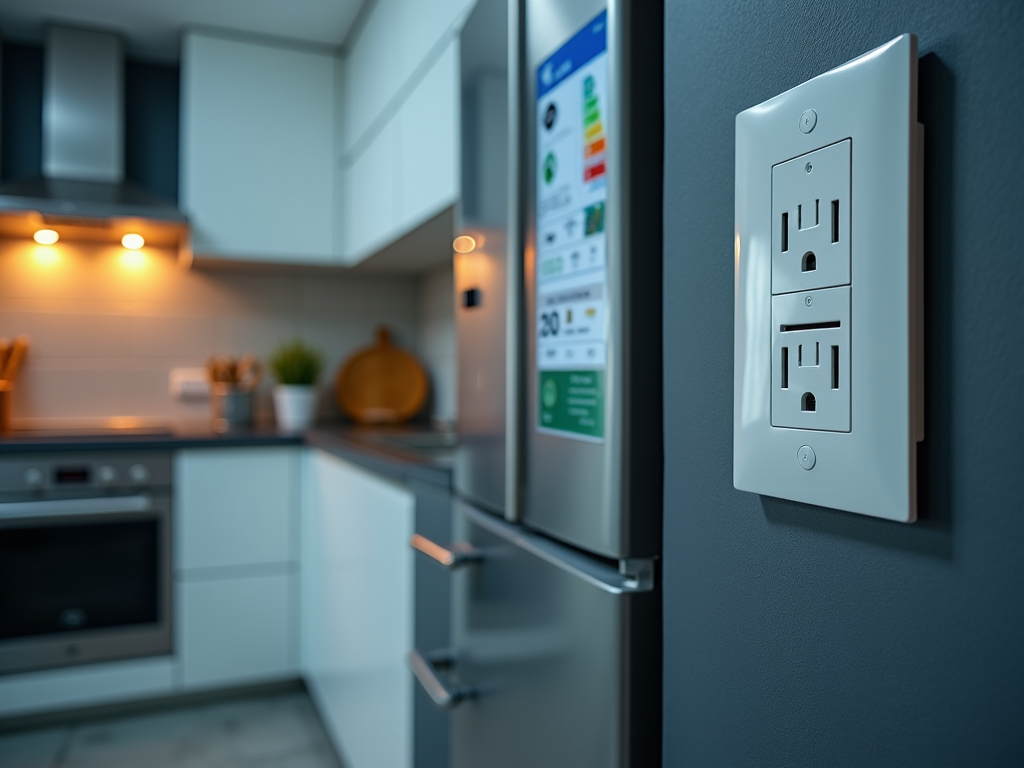Energy efficiency is the key to reducing household costs and protecting the environment. In a world where resources are more precious than ever, it is essential to make smart investments and reconsider daily habits. This article explores how simple home modifications can yield significant savings. From transitioning to LED lights to optimizing heating systems – discover how each chapter will help you sustainably reduce your energy costs.
Saving Electricity at Home: A Guide to Reduce Costs and Consumption

A conscious use of electricity at home not only reduces the monthly bill but also has positive effects on the environment. The first step towards lower electricity consumption is optimizing heating and hot water. Reducing the hot water temperature to a maximum of 55°C and using the storage heater selectively can lead to significant savings. Additionally, taking a full bath consumes three times more energy than a shower, making the shower a more eco-friendly option.
Another major energy consumer in the home is the refrigerator and freezer. An ideal temperature setting of 6-7 °C for the refrigerator and -18 °C for the freezer keeps energy consumption low. Regularly defrosting prevents ice build-up, which unnecessarily increases consumption. There are also savings potentials in lighting: switching to LED lamps not only saves energy but also extends the lifespan of the bulbs. Entertainment and communication devices should never be left in standby mode; instead, it is advisable to use power strips with switches to disconnect them completely.
When washing and drying, low washing temperatures, such as 30 °C, help drastically reduce energy consumption. Air-drying clothes instead of using the dryer saves a lot of energy. Efficient cooking techniques are also crucial: a kettle, for example, heats water significantly more efficiently than a stove. Modern appliances also offer the possibility of sensibly utilizing residual heat by turning off early.
Technical solutions such as home automation systems are gaining increasing importance as they allow for personalized control and automation of energy consumption. Furthermore, when purchasing devices, it is useful to check the energy efficiency class to save costs in the long term. Finally, it is important to regularly check the electricity rate and switch if necessary to benefit from potential savings.
With small modifications and conscious decisions in daily life, electricity consumption can be effectively reduced, which not only eases the family budget but also contributes to environmental protection.
Optimize Heat Production: Practical Steps to Reduce Heating Costs

An efficient heat distribution and heating habits play a key role in reducing heating costs at home. Adjusting the living room and bedroom temperatures to 20-22 °C and 18 °C respectively can already lead to significant savings. Every degree lower saves about 6% of energy. Use programmable thermostats to automate these adjustments and respond to your absence without having to adjust them continuously.
Proper ventilation can save energy. Instead of keeping windows open for long periods, it is advisable to open them completely for short periods several times a day. This quick ventilation effectively exchanges the air and prevents the loss of valuable heat that escapes if the windows are kept open constantly.
The physical environment of your radiators also affects the efficiency of the heating system. Ensure that furniture or curtains do not create barriers that hinder heat circulation. This prevents cold spots in the room and maximizes heat distribution. A often overlooked aspect is regularly bleeding the radiators. Air bubbles hinder the flow of water and significantly reduce heating power.
Long-term improvements can be achieved through targeted insulation. Use reflective foil behind the radiators to reflect a significant part of the heat into the room, instead of letting it escape through the walls. Further savings can come from insulation measures against thermal bridges, which can be strategically identified, for example, with a thermal camera.
In addition to structural measures, changing heating suppliers or using collective ordering for fuels like heating oil can lead to cost reductions. Consider alternative heating methods, such as wood or pellet stoves, which often offer more affordable and stable fuel prices.
In general, reducing heating costs requires a combination of behavioral adjustments and technical modifications. By implementing these measures, economic savings and ecological responsibility can go hand in hand, allowing you not only to reduce your monthly expenses but also to contribute meaningfully to sustainability.